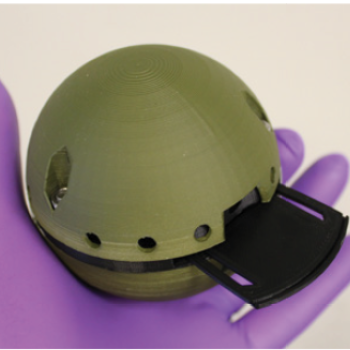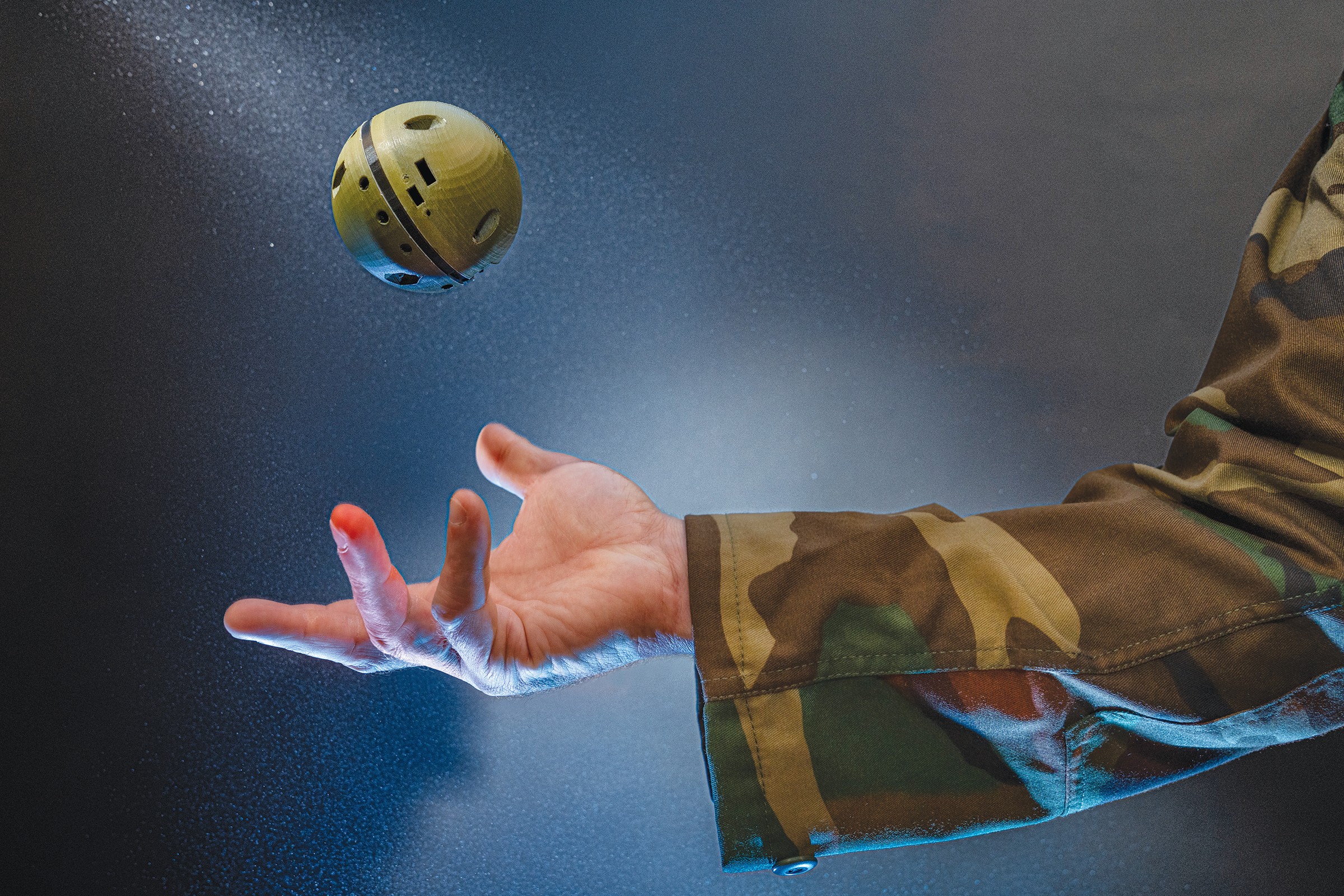Cost-Effective, Sensitive, Remote Detection of Airborne Chemical Threats

Researchers at Lincoln Laboratory developed a compact sensor to rapidly and remotely detect the presence of hazardous chemical vapors and aerosols. The Tactical Optical Spherical Sensor for Interrogating Threats (TOSSIT) uses colorimetric chemical detection to analyze vapors and aerosol particles drawn into the sensor. Because TOSSIT is encased in a small spherical shell, military personnel, law enforcement, industrial safety professionals, and first responders can toss, drop, or bowl it into tight and/or precarious spaces to determine from a safe distance airborne risks such as those from chemical weapons, byproducts of drug manufacture, and chemical-industry accidental releases.

Motivation
At sensitive military sites, chemical warfare agents may have been dispersed by adversaries. Fires ignited by lithium batteries so prevalent in modern life can produce chemical hazards. Large-scale chemical spills or accidental releases can contaminate the air around the responsible industrial plant. Airborne byproducts of a drug manufacturing operation can be toxic. Responders to incidents like these need to assess the level of risk presented by the aerosolized chemicals while also maintaining their own safety. Many common handheld sensors suitable for use in the field are not capable of detecting these threats, an ability found only in large, complex, and costly systems.
Innovative Solution
Lincoln Laboratory developed a compact, self-reading sensor that uses colorimetry, the measurement of color changes produced by chemical reactions, to identify chemicals present in air samples. The sensor is housed in a spherical shell that contains a colorimetric dye substrate, an optical sensor package, and control electronics and battery. Air samples are drawn into a chamber that contains a removable colorimetric card whose dyes are dispersed on a polymer-bonded sensing layer above a porous substrate (e.g., filter paper). Chemical vapors infiltrate the sensing layer to react with the colorimetric dyes, resulting in a color change detectable when the card is illuminated by white-light-emitting diodes (LEDs). Dye cards can be tailored for specific cases.

Initially aimed at sensing liquid-vaporized chemicals, the concept has been extended for detecting solid aerosol particles, giving users a broader assessment of airborne threats. For detection/identification of solid particles, a special interface layer allows the air-handling module to capture aerosol particulates and convert them into a dissolved solute capable of interacting with the dyes on the colorimetric card.
Benefits
- Simultaneously senses liquid and solid vapors (e.g., in mist and dust particles)
- Allows use in the field because of its low size, weight, and power consumption (SWaP)
- Performs all image capture and image processing on board the sensor’s microcontroller and wirelessly transmits results to a user’s device
- Offers cost-effective manufacture (<$200 per unit) because of its low SWaP and 3D-printed packaging
- Can be customized for specific chemicals or platforms
Additional Resources
R.P. Kingsborough et al., “Low-SWaP-C Colorimetric Detection of Vapor-Phase Chemical Threats,” Proceedings of SPIE 13056, Chemical, Biological, Radiological, Nuclear, and Explosives (CBRNE) Sensing XXV, June 7, 2024.
2025 R&D 100 Award Winner